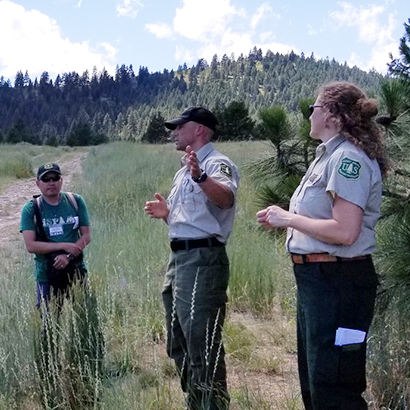PTRM 525: Foundations
Foundations of Protected Area Management
In 1872, the United States made a landmark decision to designate the Yellowstone area as a National Park. In doing so, they reserved federally administered land for the use and enjoyment of the people and to protect the features within those allocated boundaries. Since Yellowstone was designated, over 200,000 special places around the world have gained some form of national designation and protection. By 2020, the convention for biodiversity targets the protection of at least 17% of the terrestrial and in the land water in 10% of coastal and marine areas throughout the world.
This course is about why the concept of nature protection has grown to a global phenomenon and how the idea of protection or preservation has evolved over time. Starting with the Yellowstone example, we will demonstrate that the U.S. has moved through at least five distinctive paradigms of management in the park’s 140+ year history. Those paradigms include allocation, protection, professional management, scientific management and managing within the context of dynamic complexity. Each paradigm occurred within a distinctive social context and each paradigm was replaced as its limitations were unveiled. The Yellowstone example will be used as a metaphor for analyzing our global system of protected areas and how they are managed within differing paradigms across the planet. From this analysis, we will discover the complexity of our global challenge and how that complexity provides both rich opportunity and enduring challenges.
Instructor: Jennifer Thomsen
Course objectives:
Upon completion of this course, each student will:
- Develop a personal framework for the assessing the role, purpose and paradigms for the management of protected areas. What are we protecting? Why, and to what ends?
- Understand the multiple cultural and natural values associated with the nature conservation and how protected areas influence and are influenced by those values.
- Understand the global protected area system including the major treaties, conventions, actors and categorizations used to assess the scope of nature conservation at a global scale.
- Be aware of the major global issues and imperatives that are shaping the designation and management of protected areas (e.g., species extinction, economic development, human health and welfare, globalization, ecosystem-based services, etc).
- Understand the relationship between nature protection and civil society including governance structures and the variety of demands placed on nature protection within any given paradigm of protection.
- Understand different ways of thinking about how to conceptualize and make sense out of what often appears to be a chaotic situation.
- Have considered the effectiveness of our existing management frameworks for confronting the current and emerging challenges for protected area management.
- Appreciate the evolving, complex and dynamic nature of protected area values, management and potential.
